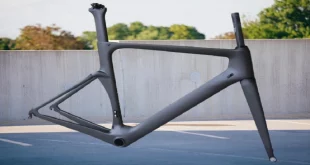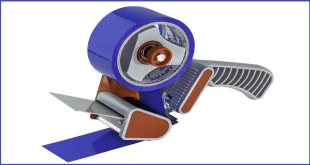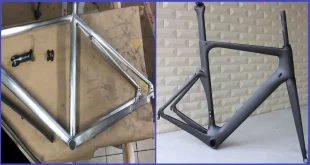Yes, a cracked aluminum bike frame can be fixed by a professional bike repair shop. Aluminum frames can be welded and repaired to restore their structural integrity.
However, it is important to assess the severity of the damage before attempting a repair and seek the assistance of a trained technician for best results. Cracks in bike frames can compromise safety and performance, so it is crucial to address the issue promptly and correctly.
By consulting experts in bike frame repair, you can ensure that your aluminum bike frame is effectively repaired, allowing you to continue enjoying your cycling adventures with peace of mind.
Understanding The Impact Of A Cracked Aluminum Bike Frame
Cracking of an aluminum bike frame can have significant implications on both rider safety and bike performance. It is important to comprehend the gravity of this issue and take appropriate steps to address it. In this section, we’ll delve into the significance of a cracked frame, the potential dangers it poses, and its impact on bike performance.
Significance Of A Cracked Frame
- A cracked aluminum bike frame is a structural problem that can compromise the overall integrity of the bicycle.
- The crack may start as a minor cosmetic issue but can gradually worsen, posing a serious threat to the rider’s safety.
- Recognizing the significance of a cracked frame is crucial to prevent potential accidents and injuries.
The Potential Dangers It Poses
- Riding with a cracked aluminum bike frame increases the risk of sudden failure or catastrophic breakage during operation.
- The crack compromises the strength and stability of the frame, making it more susceptible to complete failure under stress or impact.
- These unexpected failures can cause accidents, potentially leading to severe injuries for the rider.
Impact On Bike Performance
- A cracked aluminum bike frame affects the overall performance and handling of the bicycle.
- The compromised structural integrity can result in decreased stability, making it challenging to maneuver the bike effectively.
- Vibrations and flexing caused by the crack can adversely impact ride quality, leading to discomfort and reduced control.
Considering the significance, potential dangers, and impact on bike performance, it is imperative to address a cracked aluminum bike frame promptly. Ignoring this issue can lead to further damage and increased safety risks. In the next section, we will explore the potential solutions for fixing a cracked aluminum bike frame.
Diagnosing A Cracked Aluminum Bike Frame
Cracking a bike frame, particularly an aluminum one, can be a frustrating setback for any cyclist. Determining whether a cracked aluminum bike frame can be fixed or not depends on various factors. In this section, we will focus on diagnosing a cracked aluminum bike frame to help you assess the severity of the damage.
By paying attention to visual inspection techniques and common warning signs, as well as consulting a professional for an accurate diagnosis, you can make an informed decision on whether to repair or replace your cracked aluminum bike frame. Let’s dive in and explore these aspects further.
Visual Inspection Techniques
Performing a thorough visual inspection is crucial in assessing the condition of your aluminum bike frame. Here are some techniques to help you identify potential cracks:
- Examine the frame under good lighting conditions to spot any surface anomalies or imperfections.
- Look for visible cracks, which may appear as hairline fractures or more prominent gaps in the frame.
- Pay close attention to areas prone to stress, such as welds, joints, and areas supporting high loads.
- Inspect the paint and finish for any signs of bubbling, flaking, or peeling that may indicate structural issues.
Common Warning Signs
Recognizing common indicators of a cracked aluminum bike frame can be a valuable skill for any cyclist. Consider the following warning signs:
- Unusual creaking or clicking noises during rides, especially when applying force or navigating rough terrain.
- Unexplained vibrations or excessive flexing of the frame while cycling.
- Sudden change in bike handling, such as instability, wobbling, or unpredictable steering.
- Frame misalignment, visible bends, or irregularities that may affect the bike’s balance.
Consulting A Professional For Accurate Diagnosis
While visual inspection and warning signs can provide initial clues, it’s critical to consult a professional bike technician or frame builder for an accurate diagnosis. Here’s why:
- Professionals have the expertise to identify hidden cracks or frame damage that may not be immediately visible.
- They possess specialized tools, such as ultrasound or x-ray equipment, to detect structural flaws that may not be apparent to the naked eye.
- Seeking professional advice ensures that you receive a thorough evaluation of your bike frame’s condition, enabling you to make an informed decision on the feasibility of repair or replacement.
Remember, when it comes to a cracked aluminum bike frame, a professional assessment is essential for your safety and the longevity of your cycling experience.
Evaluating Repair Options For Cracked Aluminum Bike Frames
Aluminum bike frames are known for their durability and lightweight properties, making them a popular choice among cyclists. However, with time and usage, these frames can develop cracks, compromising their structural integrity. If you find yourself in this situation, you may be wondering if it’s possible to fix a cracked aluminum bike frame.
We will evaluate the repair options available for repairing these frames, focusing on welding as a common repair method. We will also discuss the pros and cons of welding, cost considerations, and compatibility with aluminum frame materials.
Welding: Pros And Cons
Welding is a commonly used method to repair cracked aluminum bike frames. It involves using heat and filler material to join the cracked pieces together, strengthening the frame. Here are some pros and cons of welding:
Pros:
- Welding can provide a strong and durable repair, restoring the frame’s structural integrity.
- The repaired frame can often retain its original appearance and performance.
- Welding is a widely available repair method, with many professional bike shops offering welding services.
Cons:
- Welding requires specialized equipment and skills. It is essential to have an experienced welder to ensure a proper and effective repair.
- The heat generated during welding can potentially weaken the surrounding metal, leading to further damage if not done correctly.
- Welding may alter the frame’s overall weight and stiffness, affecting the bike’s ride characteristics.
Cost Considerations
When considering repairing a cracked aluminum bike frame, cost is an important factor to take into account. Here are some cost considerations to keep in mind:
- Professional welders typically charge for their services based on the complexity of the repair and their expertise. The cost can vary significantly depending on the extent of the damage and the specific repair needed.
- In some cases, the cost of welding may approach or even exceed the cost of a new bike frame. It’s essential to assess the cost-effectiveness of the repair compared to purchasing a replacement frame.
- If the bike frame is under warranty, it’s recommended to contact the manufacturer as they may offer repair or replacement options at a reduced cost or even free of charge.
Compatibility With Aluminum Frame Materials
Another crucial aspect to consider when evaluating repair options for cracked aluminum bike frames is the compatibility of the repair method with the frame’s materials. Here are some points to note regarding compatibility:
- Aluminum bike frames come in different alloys and compositions, each with its unique characteristics. It is essential to ensure that the welding method used is compatible with the specific aluminum alloy of the frame.
- Some aluminum alloys may be more challenging to weld than others due to their composition or specialized heat treatment processes. Consultation with an experienced welder or bike frame specialist is recommended to determine the best repair method for your frame.
Repairing a cracked aluminum bike frame is a decision that requires careful consideration of various factors, including the pros and cons of welding, cost considerations, and the compatibility of the repair method with the frame’s materials. By understanding the available options and seeking expert advice, you can make an informed decision that will ensure the longevity and safety of your bike.
Remember to consult with professionals for comprehensive guidance tailored to your specific situation.
Replacing A Cracked Aluminum Bike Frame
Is Replacement Necessary For Every Crack?
When faced with a cracked aluminum bike frame, many cyclists wonder whether it’s absolutely necessary to replace the entire frame. The good news is, not every crack automatically requires a full replacement. Depending on the severity and location of the crack, repair may be a feasible option.
However, it’s crucial to assess the factors involved before making a decision. Let’s delve into the key points to consider when contemplating whether to replace a cracked aluminum bike frame.
Factors To Consider Before Replacing:
- Severity of the crack: Assess the size, length, and depth of the crack. Smaller, superficial cracks may not compromise the structural integrity of the frame and could be repaired effectively. On the other hand, larger or multiple cracks that extend through critical areas may necessitate a replacement.
- Location of the crack: Determine where the crack is situated on the frame. Cracks in non-critical areas, such as the seat stays or chainstays, may pose less risk and could potentially be repaired. However, cracks near high-stress areas like the head tube or bottom bracket may be more concerning and require a replacement.
- Age and condition of the frame: Consider the age and overall condition of the bike frame. If the frame is already nearing the end of its expected lifespan or showing signs of wear and fatigue, it might be more prudent to opt for a replacement rather than investing in repairs that may only provide a temporary solution.
- Professional assessment: Seek professional advice from a qualified bike mechanic or frame specialist. They can thoroughly inspect the cracked frame, assess its integrity, and provide expert guidance on whether repair or replacement is the best course of action. Their insight can help ensure your safety and the longevity of your bike.
Before making any decisions, remember that safety should be your utmost priority when it comes to riding a bike. While repairing a cracked aluminum bike frame may be possible in some cases, it’s important to weigh the severity of the crack, its location, the age of the frame, and seek professional advice before proceeding.
By carefully considering these factors, you can make an informed decision that will keep you rolling smoothly and safely on the road or trail.
Preventive Measures To Avoid Cracked Aluminum Bike Frames
Aluminum bike frames are lightweight and durable, making them a popular choice among cyclists. However, they are not immune to cracks and damage. To ensure the longevity and integrity of your aluminum bike frame, there are several preventive measures you can take.
Proper Maintenance And Regular Inspections
Regular maintenance and inspections are crucial for identifying and addressing potential issues before they worsen. Here are some key points to consider:
- Clean your bike regularly to remove dirt and grime that can lead to corrosion or weak spots in the frame.
- Conduct a visual inspection of the frame before and after each ride, checking for any signs of cracks, dents, or stress points.
- Pay close attention to areas where the frame is welded, as these are common areas for cracks to occur.
- If you notice any damage or suspect a crack, take your bike to a professional for a thorough examination and repair.
Avoiding Excessive Stress On The Frame
Excessive stress can weaken the aluminum frame and increase the risk of cracks or damage. Here are a few measures to avoid placing unnecessary strain on your bike frame:
- Be mindful of the weight and load you carry on your bike, especially if you frequently use panniers or bike racks.
- Avoid jumping off curbs or tackling extreme terrains that exceed the capabilities of your bike.
- When riding over rough surfaces, try to absorb shocks with your legs rather than relying solely on the bike frame.
Choosing The Right Bike Frame Material
Choosing the right bike frame material is essential for preventing cracks and ensuring the longevity of your bike. Here are some considerations to keep in mind:
- Aluminum frames are generally more resistant to cracks than other materials like carbon fiber. However, they may be more prone to dents.
- If you engage in heavy-duty cycling activities or prefer a more robust frame, you might consider steel or titanium frames.
- Evaluate your riding style, budget, and personal preferences when selecting a bike frame material to ensure the best fit for your needs.
By following these preventive measures, you can minimize the chances of experiencing a cracked aluminum bike frame. Remember, proper maintenance, avoiding excessive stress, and selecting the right material are key factors in preserving the integrity and longevity of your bike.
So, take the necessary precautions and enjoy your rides with confidence.
Tips For Extending The Lifespan Of An Aluminum Bike Frame
Cycling enthusiasts know the importance of keeping their bikes in top-notch condition. When it comes to aluminum bike frames, taking proactive measures to extend their lifespan is crucial. While a cracked aluminum frame may seem like a cause for concern, there are steps you can take to prevent such damage.
By following these tips for routine cleaning and maintenance, regularly checking for signs of damage, and avoiding harsh riding conditions, you can ensure that your aluminum bike frame stays strong and reliable for years to come.
Routine Cleaning And Maintenance:
- Keep your bike clean by washing it regularly, especially after riding in muddy or dusty conditions. Use a mild soap or bike-specific cleaner to avoid any damage to the frame.
- Dry off your bike thoroughly after washing, paying special attention to areas prone to moisture buildup, such as the joints and welds. This will help prevent corrosion.
- Apply a protective wax or sealant to the frame to provide an extra layer of defense against scratches and corrosion.
- Inspect the frame for any loose bolts or components and tighten them as necessary. This will help avoid unnecessary stress on the frame and prevent potential damage.
Regularly Checking For Signs Of Damage:
- Conduct frequent visual inspections of the frame, looking for any cracks, dents, or signs of stress. Pay close attention to areas where the frame is exposed to the most strain, such as the welds and seams.
- Use your fingertips to feel for any abnormalities in the frame’s surface, such as rough spots, bulges, or
- Pay attention to any unusual noises or vibrations while riding, as they could be indicative of a compromised frame.
- If you notice any signs of damage, it’s essential to address them promptly. Consult with a professional bike mechanic or visit a local bike shop to assess the severity and determine the appropriate course of action.
Avoiding Harsh Riding Conditions:
- Be mindful of the terrain you ride on and try to avoid excessively rough or rocky trails that can put excessive stress on the frame.
- When riding over obstacles, such as curbs or potholes, try to navigate them with caution to minimize the impact on the frame.
- Take extra care when transporting or storing your bike, ensuring it is properly secured to prevent any accidental bumps or impacts that could damage the frame.
- Keep in mind that aluminum frames are generally more susceptible to fatigue and stress fractures compared to other materials. Therefore, it’s important to ride within your bike’s specified weight limits and avoid excessive force or jumps that may exceed its capabilities.
By following these tips, you can help extend the lifespan of your aluminum bike frame, maintaining its integrity and performance over time. Remember that regular cleaning, diligent inspections, and mindful riding practices are key to keeping your bike in excellent condition.
Factors To Consider When Purchasing An Aluminum Bike Frame
When it comes to choosing the right aluminum bike frame, there are several key factors to consider. The strength and durability of the frame, the reputation of the manufacturer, and your budget are all important considerations that will impact your decision.
Let’s take a closer look at each of these factors:
Strength And Durability Considerations:
- Aluminum bike frames are known for their lightweight yet sturdy construction, making them a popular choice among cyclists.
- Look for frames that are made from high-quality aluminum alloys, as this will ensure greater strength and durability.
- Consider the intended use of your bike. If you plan to ride aggressively or tackle rough terrains, opt for a frame that offers enhanced strength and impact resistance.
- Pay attention to the frame’s design and construction techniques, such as butted tubes or hydroforming, which can further enhance its strength and durability.
The Importance Of A Reputable Manufacturer:
- Choosing a frame from a reputable manufacturer is crucial as it ensures the quality and reliability of the product.
- Established manufacturers have a proven track record of producing high-quality aluminum frames that meet industry standards.
- Look for manufacturers that have been in the industry for a considerable amount of time and have positive reviews from customers and experts.
- Reputable manufacturers often offer warranties on their products, providing peace of mind and support in case of any issues.
Budget And Cost Considerations:
- Your budget will play a significant role in determining which aluminum bike frame you choose.
- Keep in mind that higher-priced frames often come with advanced features, better materials, and superior craftsmanship.
- Consider your riding needs and level of expertise. If you are a casual rider or beginner, you may not require a top-of-the-line frame, and a more budget-friendly option may suffice.
- While it’s important to stay within your budget, avoid compromising on quality and safety. Invest in a frame that offers a good balance of cost and performance.
Remember, the right aluminum bike frame should suit your riding style, durability requirements, and budget. By considering these factors and doing thorough research, you can make an informed decision and enjoy a high-performing and long-lasting bike.
Frequently Asked Questions For Can You Fix A Cracked Aluminum Bike Frame?
Can A Cracked Aluminum Bike Frame Be Repaired?
Yes, a cracked aluminum bike frame can be repaired by a professional welder who specializes in aluminum welding. They will use precise techniques to weld the crack and reinforce the frame, ensuring its strength and integrity are restored.
How Do I Know If My Aluminum Bike Frame Is Cracked?
You can check for cracks in your aluminum bike frame by thoroughly inspecting it for visual signs, such as visible cracks or fractures around the joints or tube connections. Additionally, you may notice unusual vibrations or flexing while riding, indicating a potential crack.
What Are The Consequences Of Riding With A Cracked Aluminum Bike Frame?
Riding with a cracked aluminum bike frame can be extremely dangerous. The crack can lead to a sudden failure of the frame, causing a loss of control and potentially serious injuries. It is crucial to have any cracks repaired or replace the frame to ensure your safety.
Can I Repair A Cracked Aluminum Bike Frame Myself?
Repairing a cracked aluminum bike frame requires professional expertise and specialized equipment, so it is not recommended to attempt a DIY repair. Improper repair techniques can compromise the frame’s integrity and ultimately lead to more severe damage or accidents.
How Much Does It Cost To Fix A Cracked Aluminum Bike Frame?
The cost of fixing a cracked aluminum bike frame can vary depending on the extent of the damage and the expertise of the welder. It is best to consult with a professional to assess the damage and determine the appropriate repair cost.
Conclusion
To summarize, fixing a cracked aluminum bike frame is not an impossible task. By firstly assessing the severity of the damage, one can determine the appropriate course of action. Small cracks can often be repaired using reliable methods such as aluminum welding or epoxy adhesives.
However, it is crucial to remember that these solutions may only provide a temporary fix. In cases of major damage or structural compromise, it is advisable to seek professional assistance or consider replacing the frame altogether. Regular maintenance and proactive care can significantly prolong the lifespan of an aluminum bike frame and prevent cracks from occurring in the first place.
So, if you notice even the slightest crack on your beloved bike frame, don’t panic! Explore your repair options, consult experts if needed, and you might just be able to get back on the road in no time.
 CommutingLife Explore The World On Two Wheels
CommutingLife Explore The World On Two Wheels





